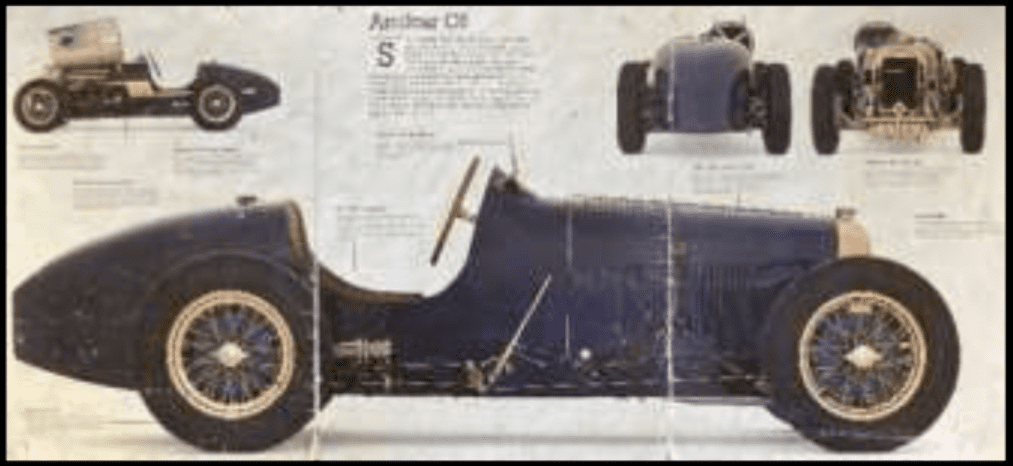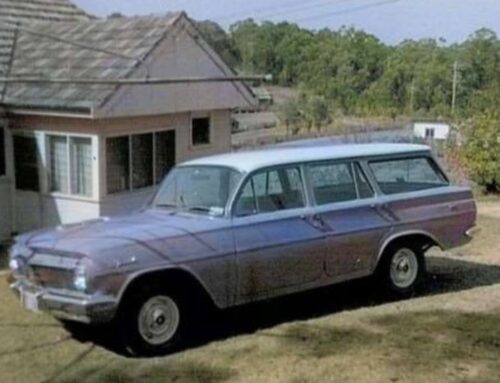1926 Amilcar C6 replica- May 2024 Cover Story
David Johnson has had many opportunities to keep in practice since retiring after four decades as a mechanic. He has a 3.4 litre Mark 1 Jaguar and an FB Holden, to both of which he has made performance, safety and comfort improvements. But a few years ago an article on the Amilcar C6 in a 1993 issue of the Encyclopedia of Supercars magazine caught his attention.
Amilcar was a French manufacturer which began building cyclecars in 1921. Cyclecars weighed less than 350kg dry, seated one or two and had an engine of less than 1,100cc, and were charged a low tax rate.
Amilcar launched similar four-cylinder models each year until 1928 when it released the Amilcar M fourdoor sedan. This was followed by cars with 2.3 litre straight eight engines, then a big four-cylinder model, and finally one with front wheel drive. And in the mid-1920s Amilcar developed a racing model with a supercharged double overhead camshaft six-cylinder engine with roller-bearing crankshaft.
The company had suffered financial problems since its inception, and developing new engines and transmissions and going racing ultimately proved disastrous. Amilcar was due to present yet another new model at the 1939 Paris Motor Show, but France declared war on Germany, the motor show was cancelled, and Amilcar had built its last car.
But none of this history mattered, as the Amilcar C6 that David had seen in the Encyclopedia of Supercars was one of the most sporty, exciting and beautiful cars of the pre-war era, and he had started to think of building a replica.
The C6 was a 565kg production version of the racing model, with the same chassis, axles, cable-operated drum brakes, four-speed transmission and 1,097cc DOHC engine with dry sump, but with seven plain main bearings instead of the racer’s roller-bearing crankshaft. With its Roots-type supercharger it produced 62bhp at 5,600rpm, but would apparently rev to 6,500-7,000rpm.
The C6 made its debut at the 1926 Paris Motor Show, and on a timed run at the Montlhéry racing circuit it reached 162mph. Its engine-turned dashboard included two tachometers, one for each cam, and options were cycle-style fenders and a spare tyre.
David’s son helped him scale the dimensions of his replica based on photos in the Encyclopedia. Overall dimensions were readily available, but the length and height of the cockpit, dimensions of radiator and cowling, size of springs etc had to be calculated from photographs.
Then started the quest to find components that would be consistent with the roughly ¾-scale that David had decided on.
The engine and transmission came from a Rover Colt ride-on mower: its 8hp Briggs & Stratton with threespeed transmission was the ideal size to fit under the car’s shapely tail. To simplify the suspension and drive train it sits on a subframe separate from the body, with a chain drive to the axle on the right side.
It can reach up to 70kmh, and has a hydraulicallyoperated disc brake with cable handbrake.
The car’s tail and radiator cowling are fibreglass and the bonnet is aluminium, all made by David. He had Morris Minor springs cut down to reproduce the quarter- and half-elliptic springs of the original. The tyres are 17-inch from a Honda CT110 postie bike, and David has fitted them with neat dummy brake drums. The car has a three litre fuel tank, and locating a functional inlet tube and filler cap to match the dimensions of the ¾-scale replica demonstrated some of the problems of building scale reproductions, but David finally found one. The oil tank located between the dumb irons was also an exercise in thinking outside the box: it’s made from a stainless-steel paper towel dispenser!
The gauges came from a Mark 1 Jaguar, and as the tachometer is cable-driven David was able to connect it to the Briggs & Stratton, so it is both functional and accurate. David also engine-turned the dash, so it’s just like the original.
With the engine in the rear the exhaust pipe is nonfunctional, but has a heat shield and faux-asbestos lagging to match the original.
The car took David around 12 months to build. He can fit in the cockpit comfortably, despite its modest size, and his granddaughters have learned to drive it in the park at the end of the cul de sac. It’s a beautifully-made little car, and a suitable tribute to the Amilcar C6.
Geoff Moran
Source : “The Bayside Vehicle Restorers Club Inc. Magazine”















